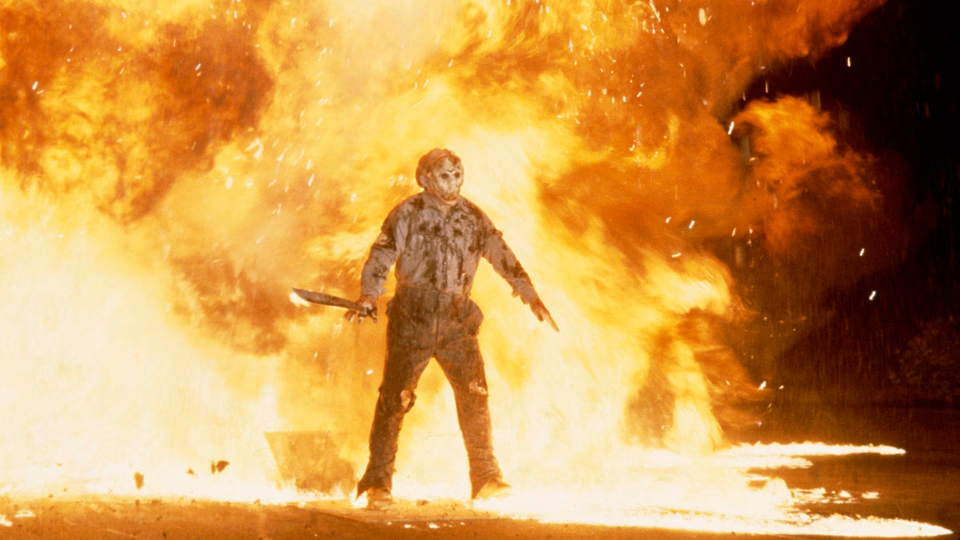Jason Goes to Hell: The Final Friday

When is a Friday the 13th movie not a Friday the 13th movie? Jason Goes to Hell: The Final Friday answers that question—though whether that’s an artistic choice or a legal necessity (given New Line Cinema’s inability to use the Friday the 13th title) remains debatable.
The film opens with what appears to be a standard franchise setup—a young woman alone at a cabin, mysterious noises, a blown light bulb, the inevitable shower scene. But director Adam Marcus plays with our conditioned responses, setting up scares that never materialize. When the door slams shut on the girl in the shed, we brace for Jason’s appearance. When she rises from picking up something and looks in the mirror, we expect to see his hulking form behind her. But Marcus holds back, training us to expect one thing before delivering another entirely.
The revelation that this is all an FBI sting operation is genuinely surprising, and watching Jason get blown to smithereens by military-grade firepower provides a visceral satisfaction that eight previous films of his apparent immortality had been building toward. It’s a bold way to start a movie—killing your franchise’s monster in the opening minutes.
But what follows is something closer to a body-possession horror film than a slasher, with Jason’s essence transferring between hosts via what can only be described as a grotesquely-oversized black slug. The movie abandons nearly all the franchise tropes—the isolated setting, the masked killer, the simple stalk-and-slash formula—in favor of a convoluted plot involving bloodlines, dark magic, and the Necronomicon (yes, from The Evil Dead).
The problems start early. Steven Williams chews scenery as bounty hunter Creighton Duke, but his character’s motivations and methods make little sense. As the film unfolds, the contrivances pile up—Jason’s niece just happening to work for a sleazy television host being perhaps the most egregious—and you can feel the screenplay straining to connect its ambitious mythology to workable drama.
Thankfully, the standout special effects help smooth over the clunky story. Highlights include a scene where one of Jason’s hosts melts into the floor, and one of the franchise’s best kills—a jaw-dropping scene where a couple’s woodland tryst ends with the young woman being split vertically in two. It’s a reminder that when this series focuses on what it does well—innovative, wince-inducing death scenes—it can still deliver the goods.
Indeed, Jason Goes to Hell isn’t a bad movie so much as a misguided attempt to reinvent a formula that didn’t need reinventing. It seems terrified of being just another Friday the 13th movie, so it tries to be something else entirely. But in doing so, it loses its identity. Jason barely appears as himself, Crystal Lake is mostly an afterthought, and the mythology becomes needlessly complex.
The possession-horror angle shows promise, but having to shoehorn it into the franchise’s mythology proves its undoing. The resulting film feels caught between two worlds—too unconventional to satisfy series purists, yet too tied to its slasher roots to fully commit to its more ambitious ideas.
Perhaps that’s why I never feel the urge to revisit this entry. When I’m in the mood for a Friday the 13th film, this won’t scratch that itch. That said, whenever I do revisit it, I’m always surprised by how well it executes the rare moments it hews to the series formula, and how “not bad” it proves during the rest.